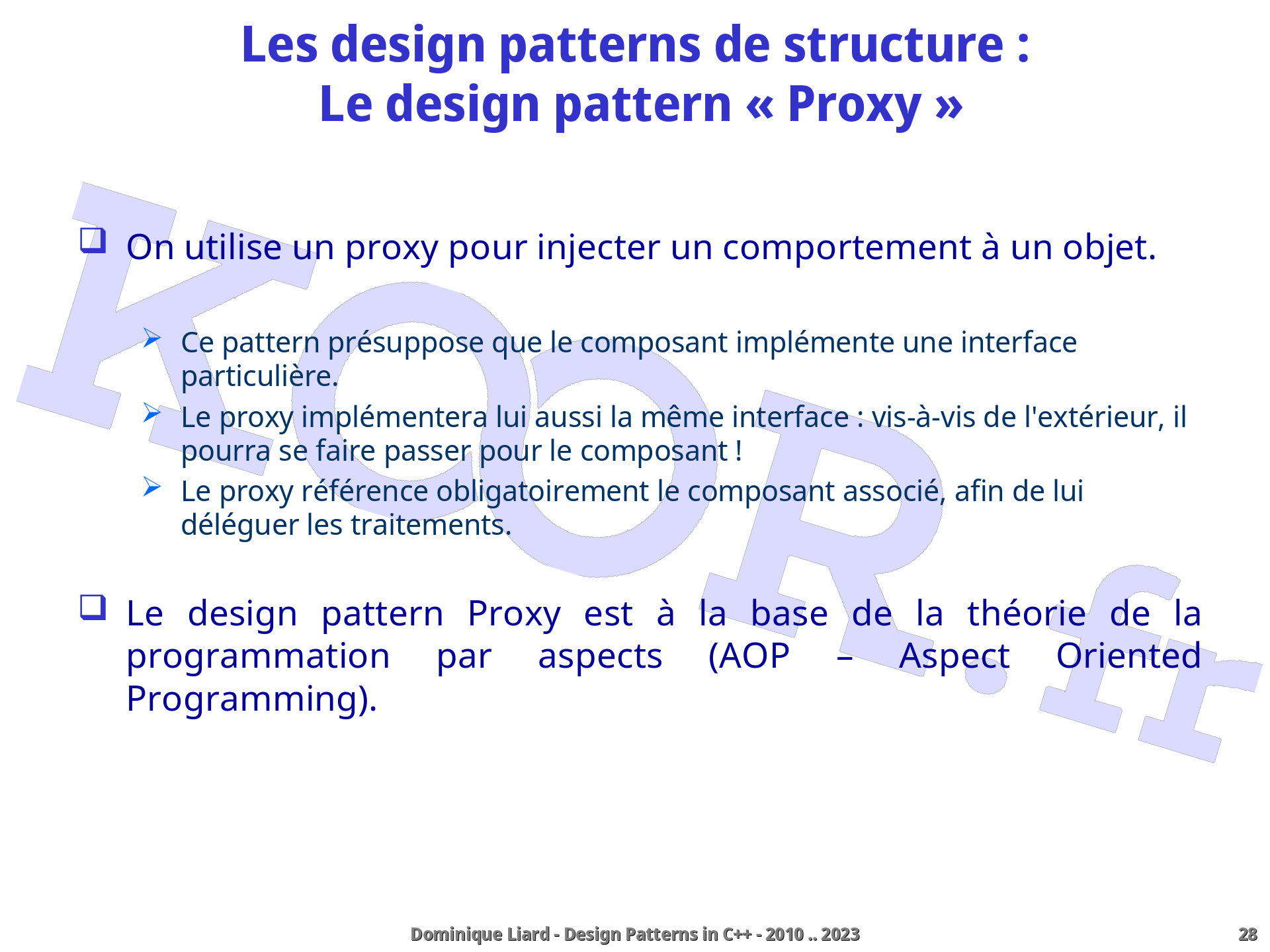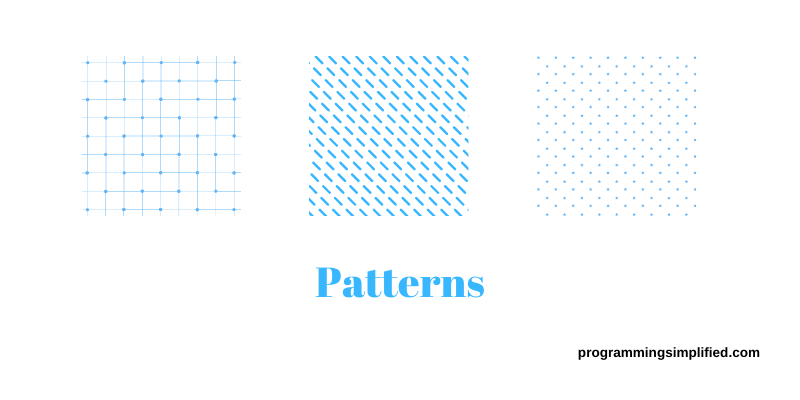Table Of Content

In the realm of design patterns, the Factory Pattern stands out for its utility in object creation. It provides an interface for creating objects in a super class, but it's the subclasses that define which class to instantiate. In the C language, though we don't have classes, we can still emulate this pattern using structures and function pointers. It achieves this by creating a set of decorator classes that are used to wrap concrete components, which represent the core functionality. Software design patterns are communicating objects and classes that are customized to solve a general design problem in a particular context. Software design patterns are general, reusable solutions to common problems that arise during the design and development of software.
Behavioural Software Design Patterns in C++
The adapter has an interface compatible with the cassette player and provides an interface for your smartphone to use. This is an abstract class that also implements the Component interface and has a reference to a Component object. Decorators are responsible for adding new behaviors to the wrapped Component object. Often, they can be combined for more powerful and flexible results. For instance, you might merge Factory and Observer Patterns to produce objects that immediately register themselves as observers. To implement the Observer Pattern in C, structures and function pointers can be used to emulate the interaction between subjects and observers.
Why are design patterns important in software development?
Facade Method is a structural design pattern, it provides a simplified, higher-level interface to a set of interfaces in a subsystem, making it easier for clients to interact with that subsystem. Decorator Method is structural design pattern, it allows to add behavior to individual objects, either statically or dynamically, without affecting the behavior of other objects from the same class. Design patterns are well-established solutions to common programming challenges.
Types of Creational Design Patterns in C++:
We will discuss how to implement the same using a .NET Application. We will compare the example with the UML diagram of the design pattern so that you will understand the concept very easily. The Factory Design Pattern is a powerful technique for flexible object creation. By encapsulating the creation logic in a factory class, we achieve loose coupling and enhance the maintainability of our code. In the string conversion example, we demonstrated how the Factory Design Pattern allows us to switch between different conversion types easily.
Design Patterns in C++: Behavioral - Observer to Visitor
They help ensure that when one part of a system changes, the entire structure of the system doesn’t need to change. Then, the client can consume the object by calling the necessary methods and properties. The client does not know how the object is created and initialized.
Dynamic Behavior Modification:
In software engineering, a design pattern is a general repeatable solution to a commonly occurring problem in software design. A design pattern isn't a finished design that can be transformed directly into code. It is a description or template for how to solve a problem that can be used in many different situations.
Top Books Referenced on Stack Overflow - Dice Insights
Top Books Referenced on Stack Overflow.
Posted: Tue, 14 Mar 2017 07:00:00 GMT [source]
In addition,they can be categorized by their intentand divided into three groups. Momento Method is a Behavioral Design Pattern, it provide to save and restore the previous state of an object without revealing the details of its implementation. Mediator Method is a Behavioral Design Pattern, it promotes loose coupling between objects by centralizing their communication through a mediator object. Instead of objects directly communicating with each other, they communicate through the mediator, which encapsulates the interaction and coordination logic.

Lets you save and restore the previous state of an object without revealing the details of its implementation. The pattern restricts direct communications between the objects and forces them to collaborate only via a mediator object. Turns a request into a stand-alone object that contains all information about the request. This transformation lets you pass requests as a method arguments, delay or queue a request's execution, and support undoable operations.
Types of Creational Design Patterns:
UserAPI returns JSON data directly, while EmployeeAPI returns XML data. The XMLToJSONAdapter class is used to convert the XML data from EmployeeAPI into JSON format, making it compatible with the rest of the system that expects JSON data. You have a web-to-print onlineshop and want to add high quality content?
The existing object acts as a prototype and contains the state of the object. The four authors of the book, famously known as the Gang of Four, brought the concepts of design patterns in their book Elements of Reusable Object-Oriented Software. Be aware that you may violate the Liskov Substitution Principle.LSP basically says that objects of a superclass should be replaceable with objects of its subclasses without breaking the application. While it sounds easy, as the application gets larger in the future, we may unknowingly modify the template to not be suitable for all subclasses. You can finalize the client code by changing the initial call from circleInitializer to something more abstract, to not reveal logic to client code. You can create a new class which will start the flow by calling CircleInitializer.
When the client is instantiated, a concrete factory object is passed to its constructor and populated private fields of the client with appropriate data or values. Design patterns provide developers with templates on how to solve software development problems without reinventing the wheel every time. For C++ developers, understanding design patterns and when to apply them is a cornerstone skill. When mastered, design patterns cover provide the developer with a library of elegant solutions to commonly occurring problems in software development. Structural design patterns are a subset of design patterns in software development that focus on the composition of classes or objects to form larger, more complex structures. They help in organizing and managing relationships between objects to achieve greater flexibility, reusability, and maintainability in a software system.
The nesting of decorators can make the codebase difficult to navigate and debug, especially when there are many decorators involved. Each Concrete Decorator can add one or more behaviors to the Component. Design patterns are essential tools in a developer's toolkit, but like all tools, their effectiveness depends on how they're used. Here are some practical suggestions to ensure you get the most out of design patterns in C.
Making the most of design patterns requires a blend of theory and practice. While understanding patterns is crucial, knowing how to adapt and implement them effectively in various scenarios will significantly elevate the quality of your software solutions. The "family" of objects created by the factory is determined at run-time depending on the selection of concrete factory classes. This pattern can be further divided into class-creation patterns and object-creational patterns.

Just because you're aware of a pattern doesn't mean it's the right solution for every problem. Overusing or misapplying a pattern can lead to unnecessary complexity. Evaluate if a pattern truly addresses the problem at hand or if a simpler solution exists. As the system evolves, adding more observers or even new types of subjects is straightforward. The decoupled nature ensures minimal disruption and maximizes maintainability. At the heart of the Observer Pattern is a clear separation of concerns.
Upon receiving a request, each handler decides either to process the request or to pass it to the next handler in the chain. Lets you attach new behaviors to objects by placing these objects inside special wrapper objects that contain the behaviors. Lets you ensure that a class has only one instance, while providing a global access point to this instance.

No comments:
Post a Comment